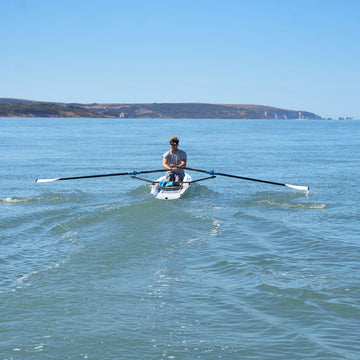I'm now of an age where my memory isn't quite what it once was. At work, I have become highly skilled in feigning a detailed understanding of problems whilst frantically attempting to recall them from memory (it's working, they haven't found me out yet!). And when I came to revarnish my mast last weekend it was apparent that I could not recall the process that gave a glass finish last year. So I thought I'd write a quick article about it as an aide memoire for me next year, and also for anyone else looking at the task.
I should point out, I have tendency for perfectionism that is both a strength and an Achilles heel, and find anything less than a glass finish difficult to accept. So the attached instructions may be a little OTT, but perhaps a good start point.
- A good quality marine polyurethane varnish (I use Blakes Duragloss)
- Thinners for the varnish.
- The best 2" paint brush that you are prepared to buy. If you are at the 'I can't believe that a brush can cost so much' type pricing, that's about right.
- Some dust free containers to mix your varnish (jam jars etc)
- Good quality masking tape, again the money seems excessive but it is ultimately worth it.
- Lots of wet and dry sandpaper from 240 grit to 600 or 800 grit. And a bucket and sponge

- If the existing varnish is not too bad, sand back using 240 grit wet and dry. Take care not to sand back into the fibres of the spar, but be sure to remove all the imperfections and dings that have blighted your spar over the past year. Keep working until you think the preparation is as close to perfect as possible- any defects left at this point just mean more work later. If you are worried about minor 240-grit scratches showing through your varnish, work up through wet and dry grades to 600/800, but again be careful not to sand into the spar.
- Wash the spar several times with water, until you are confident that it is perfectly clean. Mask fittings etc with your good quality masking tape. Wipe the mast with a tack cloth. Wipe the mast with a cloth moistened with thinners immediately prior to varnishing to get rid of any final traces of dust and 'activate' any old varnish.
- Wait for the following conditions: 15 degrees C (ish), spar not hot to the touch, preferably no direct sunlight, dry conditions for at least 6 hours (no rain or dew), no wind. Apply a coat of varnish. Irrespective of directions on the tin, I always thin the varnish by 5-15% so that it flows nicely, and go for thin coats.
- Read the overcoating instructions on the tin, and apply a further coat before the 'max overcoating' time.
- Stand back from the mast, and start worrying about where all those varnishing defects have come from. Flat back the varnish - if your preparation was near perfect first time round you might be able to flat back with 600 grit, if not you may need coarser grits.
- You are looking to get to a point where the whole mast is coated with flatted-back varnish, no runs or other defects. If you are not at this point go to (2) and try again. May take several iterations.
- Time to apply the final top coat. Get obsessive about the conditions outlined in (3). Get everything as clean as possible, accept no defects. Be sure to thin your varnish.
- Just after the final coat is applied, turn the spar through 90 degrees every minute or so, whilst the solvents flash off. This helps to stop runs forming and makes it easier for the varnish to flow.
. - Decide whether the finish is good enough, and repeat steps above as necessary.





















 Select Store
Select Store
 EU
EU
 US
US
